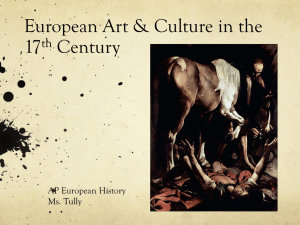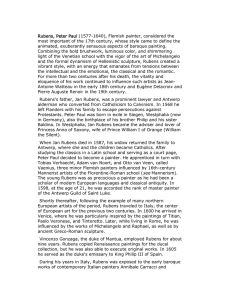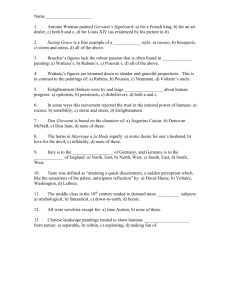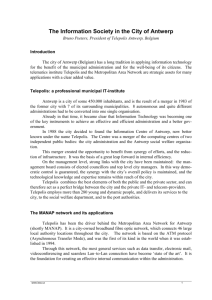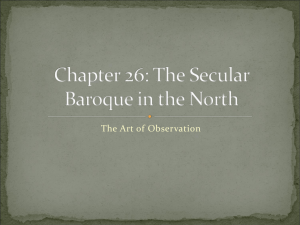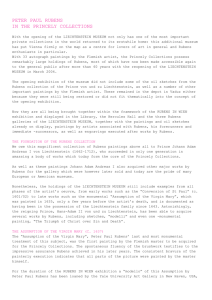IL “PALAZZO IN VILLA” LIECHTENSTEIN E IL SUO RESTAURO:
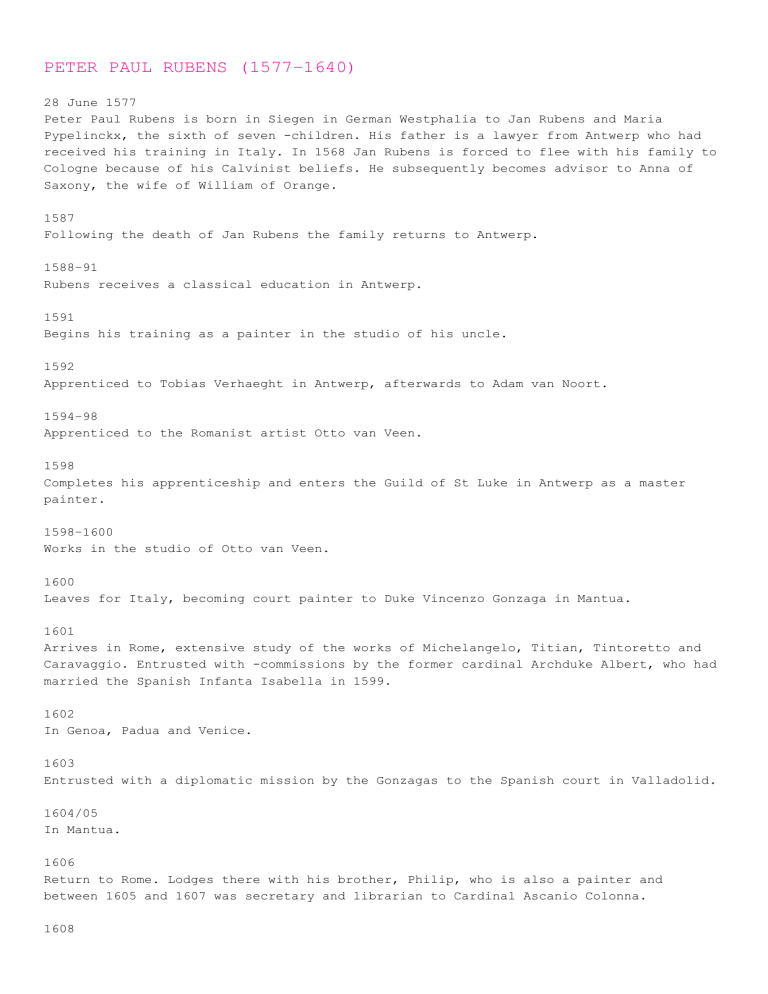
PETER PAUL RUBENS (1577–1640)
28 June 1577
Peter Paul Rubens is born in Siegen in German Westphalia to Jan Rubens and Maria
Pypelinckx, the sixth of seven -children. His father is a lawyer from Antwerp who had received his training in Italy. In 1568 Jan Rubens is forced to flee with his family to
Cologne because of his Calvinist beliefs. He subsequently becomes advisor to Anna of
Saxony, the wife of William of Orange.
1587
Following the death of Jan Rubens the family returns to Antwerp.
1588–91
Rubens receives a classical education in Antwerp.
1591
Begins his training as a painter in the studio of his uncle.
1592
Apprenticed to Tobias Verhaeght in Antwerp, afterwards to Adam van Noort.
1594–98
Apprenticed to the Romanist artist Otto van Veen.
1598
Completes his apprenticeship and enters the Guild of St Luke in Antwerp as a master painter.
1598–1600
Works in the studio of Otto van Veen.
1600
Leaves for Italy, becoming court painter to Duke Vincenzo Gonzaga in Mantua.
1601
Arrives in Rome, extensive study of the works of Michelangelo, Titian, Tintoretto and
Caravaggio. Entrusted with -commissions by the former cardinal Archduke Albert, who had married the Spanish Infanta Isabella in 1599.
1602
In Genoa, Padua and Venice.
1603
Entrusted with a diplomatic mission by the Gonzagas to the Spanish court in Valladolid.
1604/05
In Mantua.
1606
Return to Rome. Lodges there with his brother, Philip, who is also a painter and between 1605 and 1607 was secretary and librarian to Cardinal Ascanio Colonna.
1608
Informed that his mother is gravely ill he returns immediately to Antwerp. His mother dies before his arrival.
1609
Court painter to the regents of the Spanish Netherlands, Archduke Albert and Infanta
Isabella in Antwerp. His position as court painter not only brings Rubens an annual salary of 1000 gulden; in addition, he is not obliged to reside in Brussels, is exempted of all taxes and is allowed to engage as many assistants as he wishes.
3 October 1609
Marries Isabella Brant, the 18-year-old daughter of Jan Brant, a respected lawyer.
1611
Birth of a daughter, Clara Serena Rubens.
1611
Purchases a palatial house in Antwerpen surrounded by extensive gardens.
1614
Birth of a son, Albert Rubens.
1618
Birth of a son, Nicolas Rubens.
1622
Publishes a book on the “Palazzi di Genova”.
From 1622
Active as a diplomat for the English, French and Spanish courts. Conducts successful negotiations between Spain and England, and the Spanish Netherlands and Holland.
1624
Ennobled.
1625–26
Journeys to Paris and return to Antwerp.
20 June 1626
His first wife, Isabella Brant, dies, possibly due to the premature return of the family to Antwerp, where plague has broken out.
1627
Spends several months at the Spanish court.
1628
Official Spanish negotiator at the court of Charles I of England. The resumption of diplomatic relations between the two kingdoms and the subsquent truce represent the crowning achievement of his diplomatic career. from 1628
Friendship with Velasquez.
May 1629 – Spring 1630
In England.
Spring 1630
Return to Antwerp. Further diplomatic activity as advisor to Maria de’ Medici, who had fled from Cardinal Richelieu in France to the Spanish Netherlands. Negotiator at renewed peace initiative between the Spanish Netherlands and the Dutch separatists.
9 December 1630
Marries the 16-year-old Hélène Fourment.
1630/31
Knighted by both the Spanish and the English kings.
18 January 1632
Birth of a daughter, Clara Johanna Rubens.
1633
Negotiations break down between the two opposing sides in the Netherlands; death of the
Infanta Isabella. End of his career as a diplomat. From now on, Rubens devotes himself exclusively to painting.
12 July 1633
Birth of a son, Frans Rubens.
1635
Birth of a daughter, Isabella Helena Rubens.
30 May 1640
Peter Paul Rubens dies at Antwerp.
